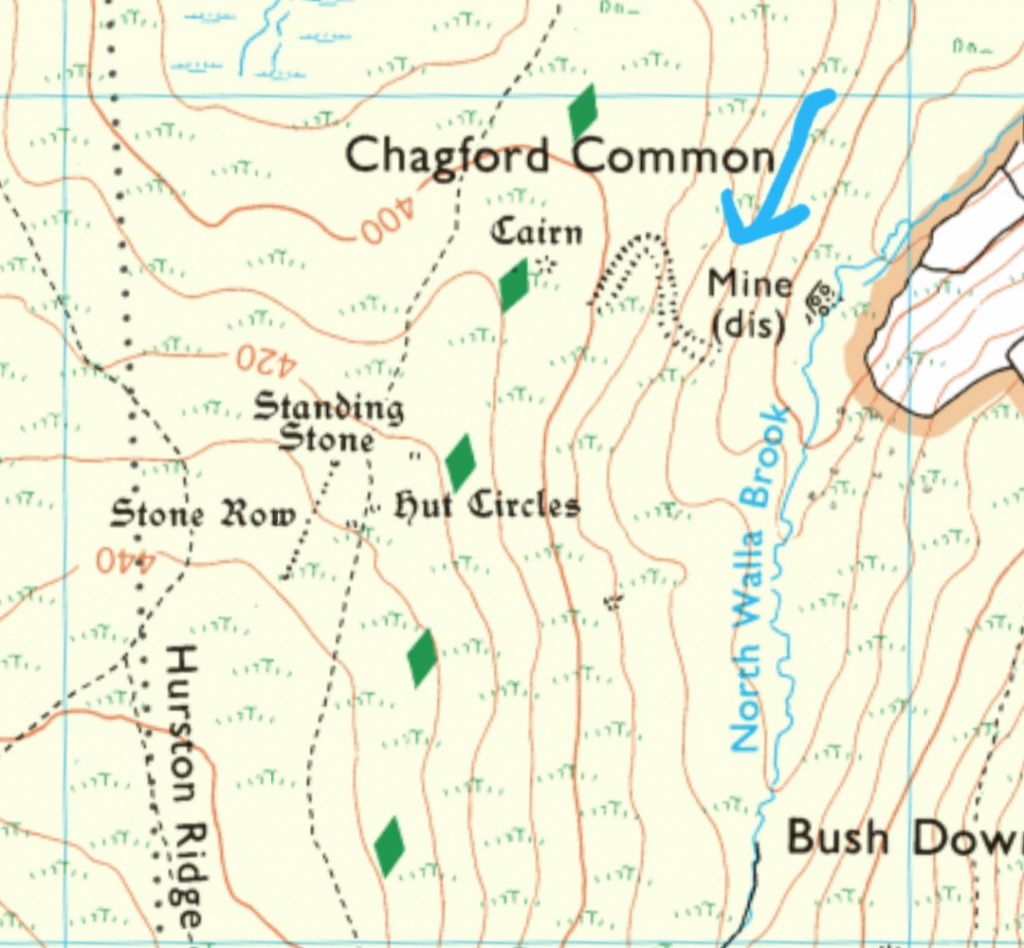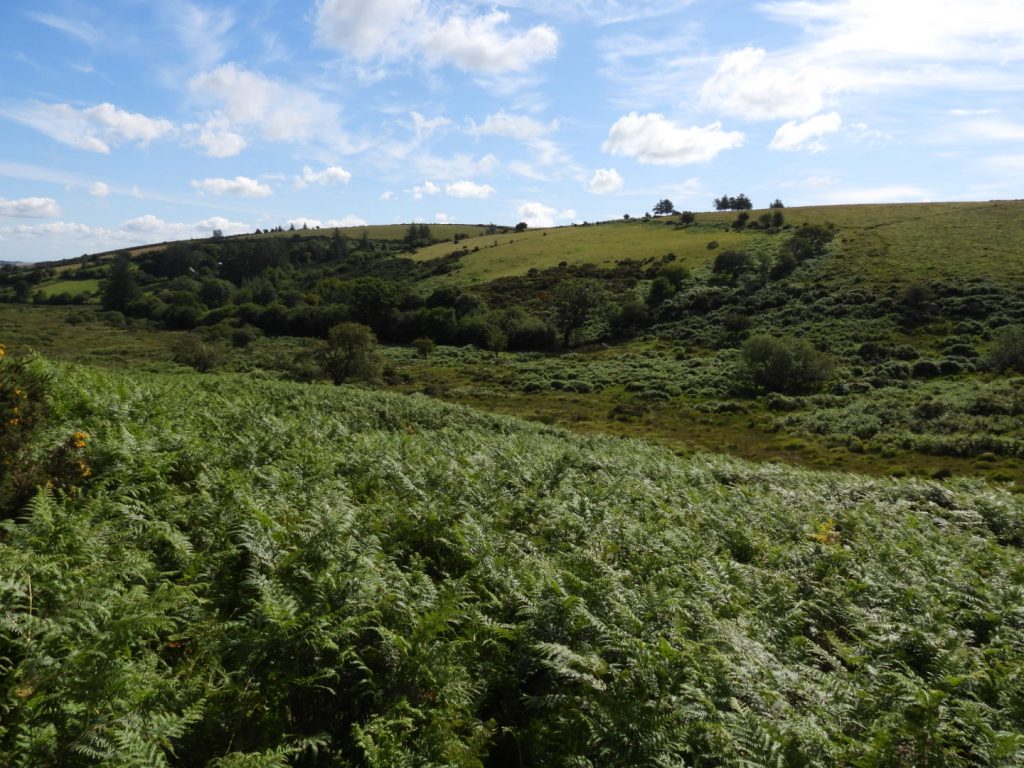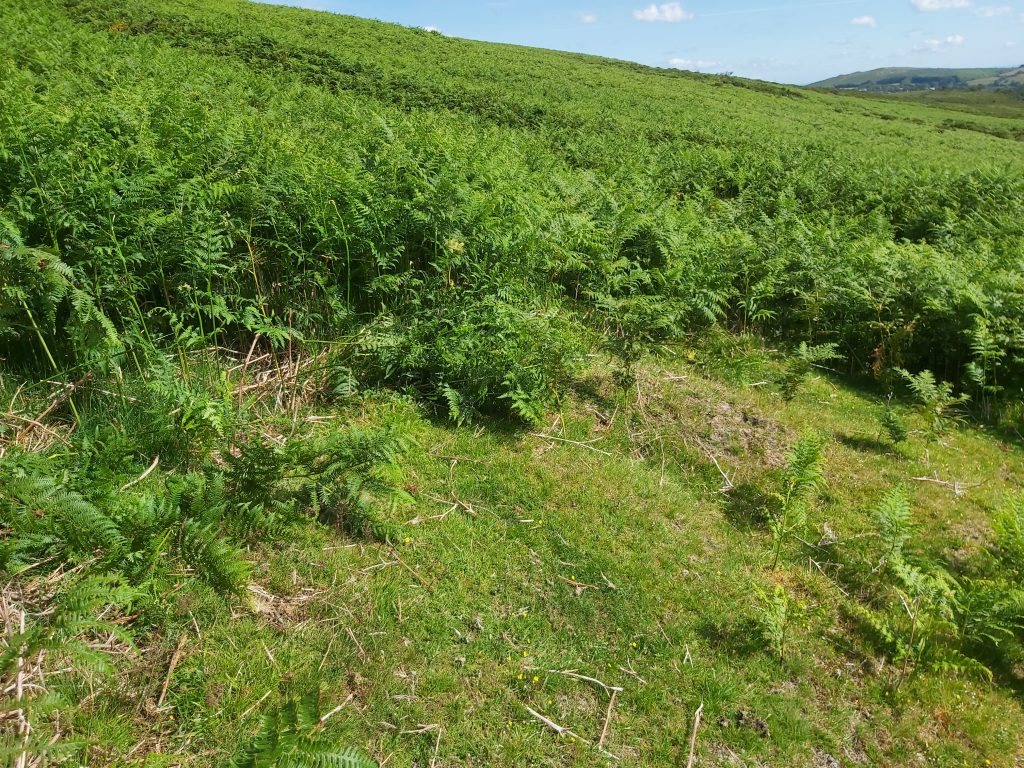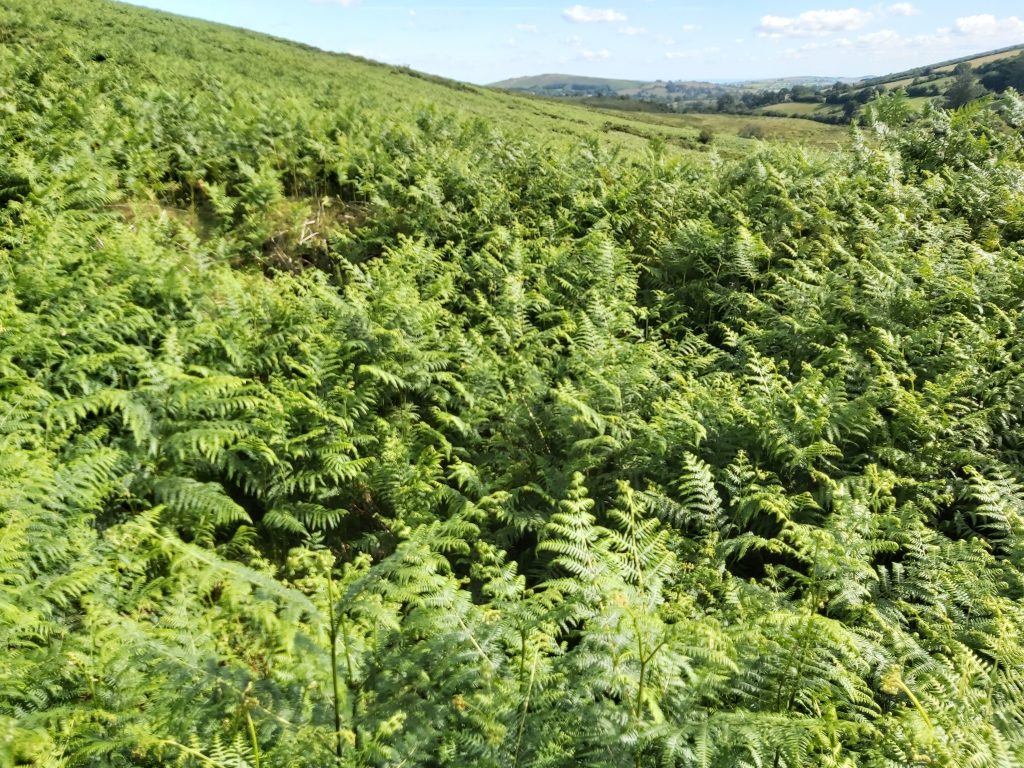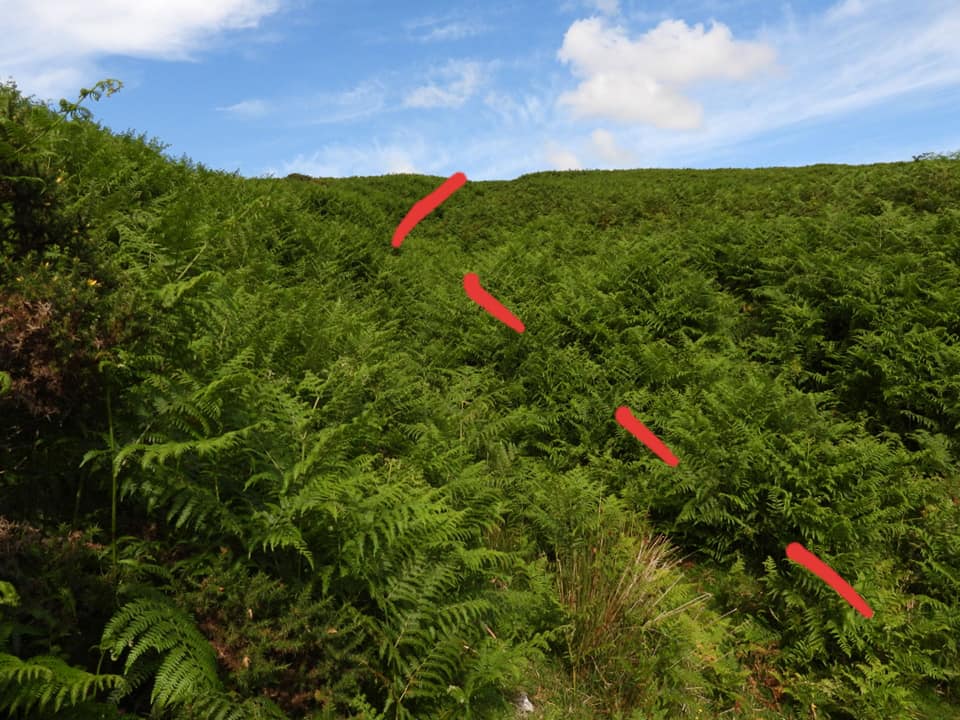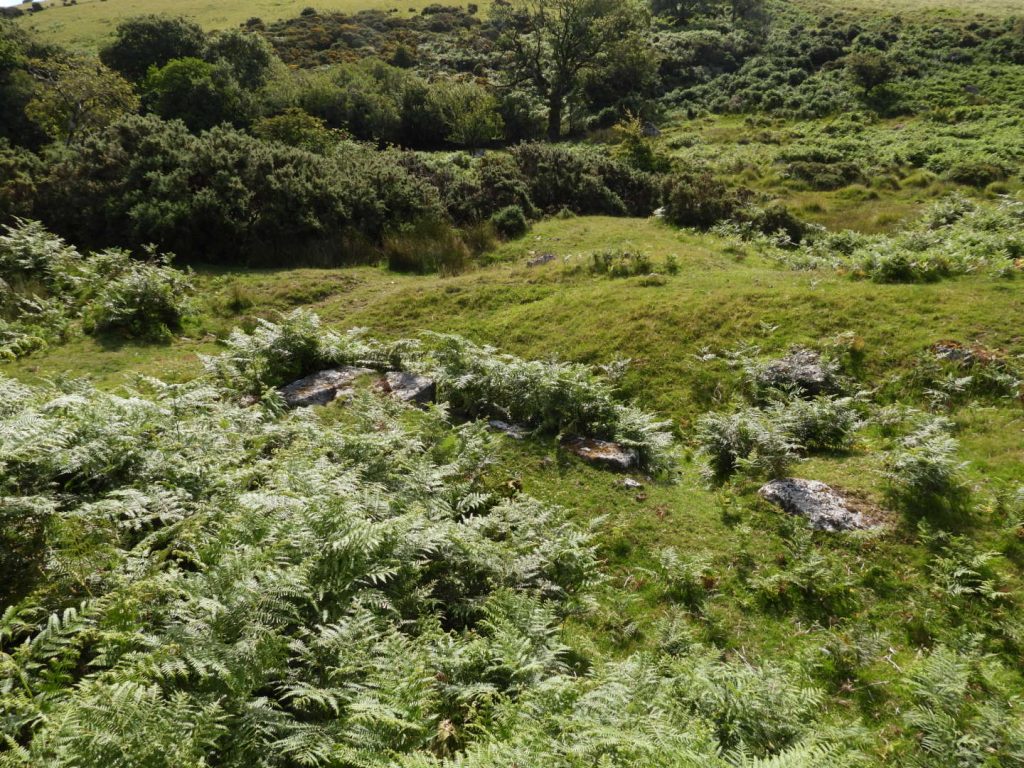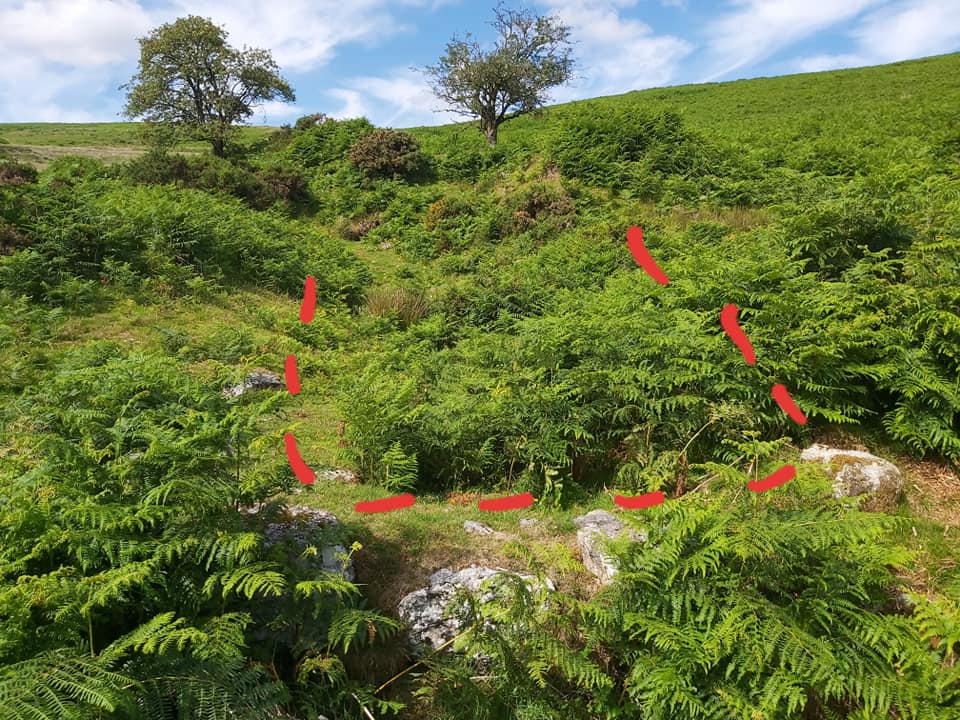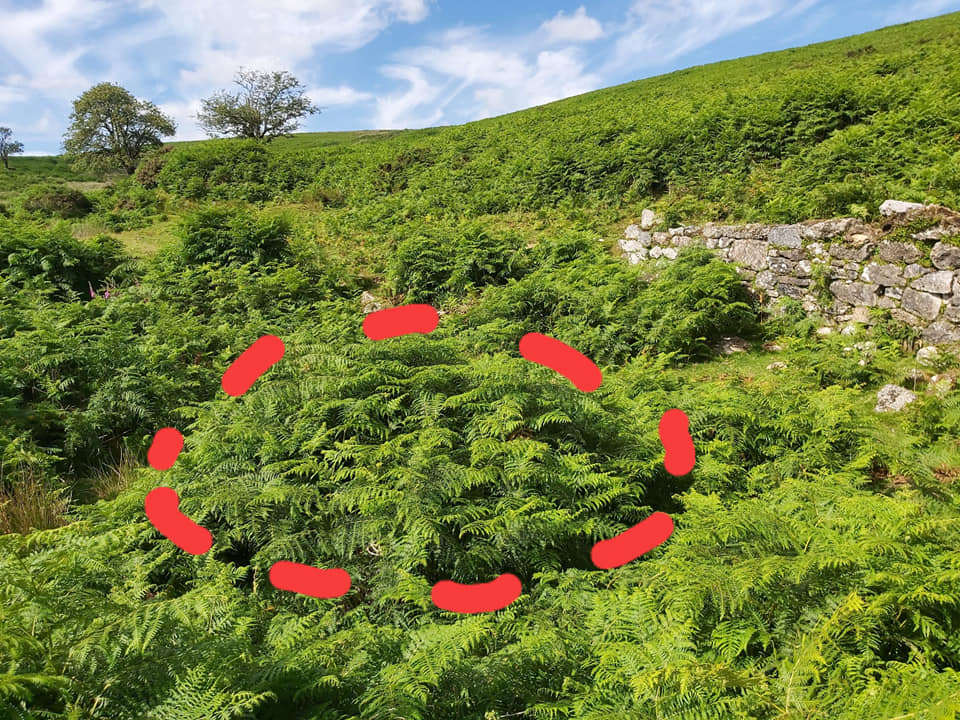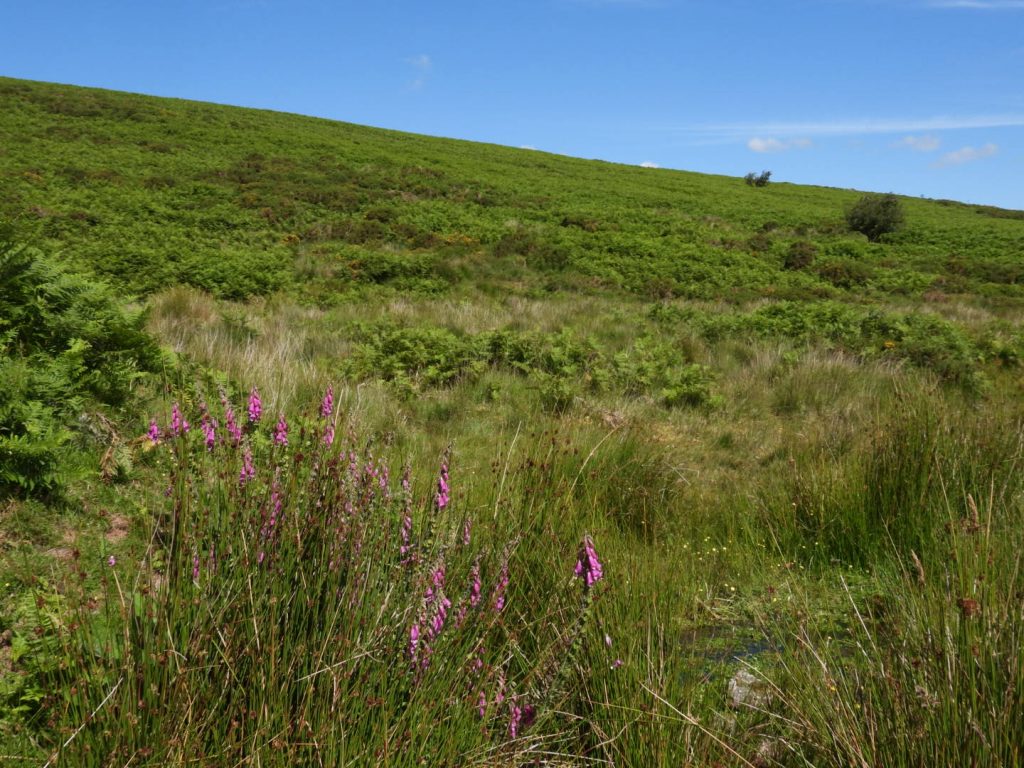Steve Grigg and Frank Collinson
This mine is in a delightful little valley just to the East of Hurston Ridge and the Two Moors Way. This mine is called by this name in Jeremy Butlers Atlas of Antiquities (North) and by Dr Phil Newman as New Vitifer Mine. Another anomaly is that the water course is named Bovey by both of two aforementioned learned gentleman but as North Walla Brook on the OS map. I have been told that the locals use ‘Hurston Water’ for the watercourse here, the Ordnance Survey’s use of ‘North Walla Brook’ possibly having have been taken from the Walla Brook due south rising below the Warren House Inn. The valley is known as ‘Boveycombe’ it seems so the ‘River Bovey’ doesn’t seem too far-fetched as a possibility. The area is described in Dartmoor News Issue 173 March/April 2020 as one of ‘Dartmoor’s Hidden Gems’.
